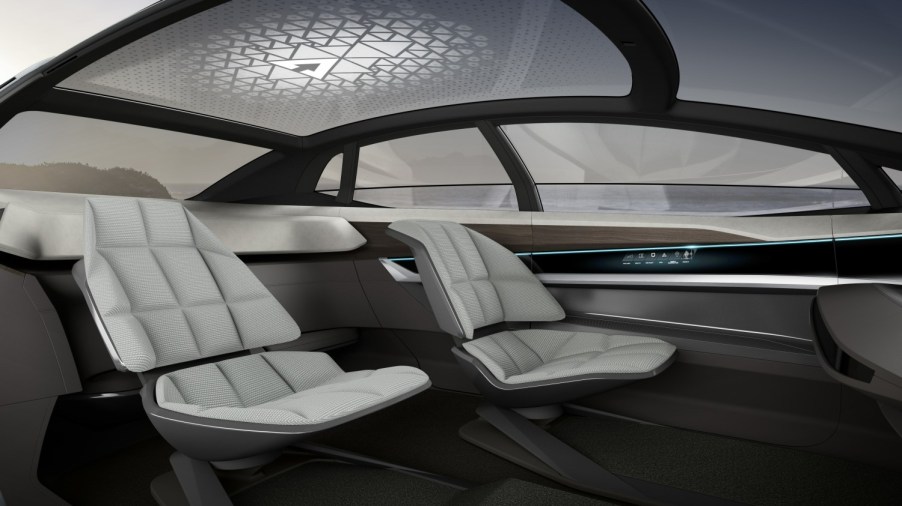
Audi Design Chief Envisions Car Interior of the Future
With the age of self-driving electric vehicles on the horizon, many automakers are busy retooling and strategizing for the next era of mobility. True to its mantra of “Progress through Technology”, Audi has been developing a fleet of battery-powered e-tron crossover SUVs and sedans, while its recent concept cars have foreshadowed the inevitable launch of fully autonomous vehicles in the near future. Now in a recent interview, lead Audi designer Marc Lichte offered insight on how these emerging technologies could reshape the car interior as we know it.

Shifting to an inside-out approach
From Lichte’s perspective, vehicles of the past have focused on exterior and powertrain considerations first, leaving interior designers to make do with whatever cabin room was leftover. Recent advancements in battery-electric power have been a game-changer, however, creating more usable space inside and radically altering the rules for chassis layout. Combined with rapid developments in self-driving technology, the stage is set for a new era of car interior design.
“For users, the interior will become their personal free space; for us designers, it’s the new design nucleus of the car. So the design process begins with the question: who will be sitting in a new model and what all would that person want to do there? It’s a 180 degree turn. In the future, the car will no longer be designed from the outside in, but from the inside out,” said Lichte.
“Because automated driving is changing an elementary point that previously seemed unchangeable in all cars worldwide: in the future, drivers will no longer have to constantly keep their hands on the wheel. Without the task of actively driving, they will gain new freedoms and can structure their time themselves. And at the same time, we are also gaining – without a steering wheel or pedals – new design possibilities for the interior and, quite simply, more room and a better sense of space.”
Interiors and models will become more specialized
While a vehicle with no steering wheel or pedals might seem like a driving enthusiast’s worst nightmare, Lichte remains confident that a more inclusive scenario will unfold instead. He predicted that future vehicle lineups will consist of highly specialized models, with sharp distinctions in their intended purpose.
“The time when the car was a compromise between a lot of contradictory demands or a kind of all-in-one solution is over. Instead, there will be more and more cars whose entire concepts are tailored for a particular purpose or use case, be it a short trip into a big city or a fast circuit around the racetrack,” said Lichte.

This highly targeted and fragmented future was showcased in Audi concepts like the self-driving long-range luxury AI:CON and human driver-focused AI:RACE. Under this approach, autonomous models would be specifically designed for basic urban functionality or relaxed long-range transport, while dedicated sport variants could still exist for human drivers to control and enjoy.
Unique perspectives and possibilities
Regardless of how that exact theory pans out, the car interior is undoubtedly evolving with each passing year and will factor heavily in automotive developments going forward. After all, it’s where we spend the majority of time in our vehicles and have the most direct connection with all they have to offer.


